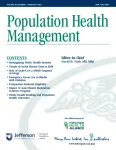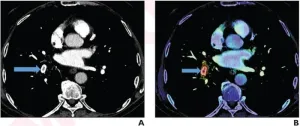By Benjamin Boettner
(BOSTON) — Infections of the middle ear, the air-filled space behind the eardrum that contains the tiny vibrating bones of hearing, annually affect more than 700 million people worldwide. Children are especially prone to ear infections, with 40% of them developing recurrent or chronic infections that can lead to complications like impaired hearing, speech and language delays, perforations in their eardrums, and even life-threatening meningitis.
As a treatment, doctors may surgically insert ear tubes knowns as “tympanostomy tubes” (TTs) into the eardrum to create an opening between the ear canal and middle ear. Ideally, these conduits ventilate the middle ear, provide a route for fluid to drain out, and allow antibiotic drops to reach the infection-causing bacteria. But in reality, these small hollow cylindrical devices made of plastic or metal function far from perfectly. Bacteria can lay down biofilms and local tissue can grow on their surfaces, which blocks TTs’ lumen and causes them to extrude. Also, antibiotic ear drops applied in the ear canal may not reach the site of infection anymore. These complications pose risks and result in the need for frequent replacement surgeries, producing sizeable economic costs to the health care system.
Importantly, problems affecting TTs also plague other fluid-transporting “implantable medical conduits” (IMCs), such as catheters, shunts, and various small tubes with use in the brain, liver, eyes, and other organs where a high-pressure barrier prevents fluids from flowing through the conduit. In the quest for superior devices, the fundamental challenge faced by biomedical engineers is rooted in the conflict that reducing IMC devices’ size and invasiveness comes at the price of increasing their risk of becoming blocked and malfunctioning.
Now, a multi-disciplinary research collaboration at the Wyss Institute for Biologically Inspired Engineering at Harvard University, Harvard John A. Paulson School of Engineering and Applied Sciences (SEAS), and Massachusetts Eye and Ear (MEE) in Boston provides a complete design overhaul for IMCs by creating a broadly applicable strategy that solves this challenge. Their approach enables IMCs with predictable and effective uni- and bi-directional fluid transport at the millimeter scale that resist various contaminations. With the example of TTs fabricated from a liquid-infused material (iTTs, short for “infused tympanostomy tubes”), they co-optimized difficult-to-reconcile functions, including fast drug delivery into and drainage of fluids out of the middle ear, resistance against water crossing from the outside into the middle ear, as well as the prevention of bacterial and cell adhesion to tubes, by introducing a novel curved lumen geometry of the tube. The findings are published in the recent cover article of Science Translational Medicine.
“As a clinical otologist, I treat pediatric and adult patients with recurrent ear infections on a daily basis and I routinely place tympanostomy tubes, which in children is the most common surgical procedure performed in the United States. Yet, TT medical device technology has remained relatively unchanged for the past 50 years,” said co-senior author Aaron Remenschneider, M.D., M.P.H. “Given our findings, I do see hope on the horizon for patients with chronic ear infections. Not only do our iTTs demonstrate a reduction in cell adhesion and improved selective fluid transport, but we showed how iTTs result in decreased scarring of the eardrum and preserved hearing when compared to standard-of-care control TTs. iTTs could also become an effective tool for delivering a range of drugs to the middle ear.” Remenschneider is a lecturer at Harvard Medical School (HMS), and at MEE collaborates closely with co-author, MEE otologist-colleague, and HMS Assistant Professor Elliott Kozin, M.D., who also investigates therapeutic approaches to ear disorders at MEE.
Material and clinical scientists listen closely – together
Preceding this collaboration, co-senior author Joanna Aizenberg, Ph.D., who is an Associate Faculty member of the Wyss Institute and the Amy Smith Berylson Professor of Material Sciences at SEAS, has pioneered bio-inspired materials with entirely new functionalities. These included SLIPS (short for “Slippery Liquid-Infused Porous Surfaces”), which expose a thin layer of oil-based liquid to prevent biofouling by various organisms while enabling specific interactions with other fluids. Aizenberg’s group had applied SLIPS technology to different industrial and environmental “biofouling” problems and, in search of unmet needs in the medical field that their materials could help address, they consulted with Remenschneider, Kozin and other physicians. A complete design overhaul of TTs and other IMCs became the goal of a long-standing collaboration driven by Aizenberg’s group, and Remenschneider and Kozin, which also included other researchers and clinicians. During its advancement, the cross-institutional project was recognized as a Validation Project at the Wyss Institute, which provided additional financial, technical, and translational support.
First-authors Haritosh Patel, a graduate engineering student in the Aizenberg lab, and Ida Pavlichenko, Ph.D., a former Wyss Technology Development Fellow began to develop the first iTT prototypes, using materials with liquid-infused surfaces and the 3D printing expertise of co-author Jennifer Lewis, Sd.D. at SEAS. “As a mother of a child who had experienced recurrent ear infections and some of their pain and harmful consequences, I could immediately relate to the clinical problem, and felt strongly compelled to spearhead a project with the potential to solve it,” said Pavlichenko. “We soon began to investigate geometry as a possible solution for solving IMCs’ fundamental design challenge. Surprisingly, only cylindrical TTs with straight internal lumen channels existed. We hypothesized that introducing specific curvatures into iTTs’ channels could allow them to discriminate between different fluids at a small scale.”
While focusing on iTTs as a first application, the team developed a much more broadly applicable modeling-enabled design process that can be applied to IMCs with different tasks and locations in the body. Based on the physical parameters of liquids, materials, and size, it starts with the fluid dynamics-based prediction of specific geometries for millimeter-sized IMCs fabricated with liquid-infused surfaces to control the directional transport of different liquids through them. “Besides validating the predicted transport of fluids through rationally designed and fabricated iTT prototypes in in vitro models of the middle ear, we also demonstrated their resistance against adhesion by the five most common bacterial strains causing ear infection in children,” said Patel. The strains were directly isolated from patients with chronic middle ear infections by co-author Paulo Bispo, Ph.D., another MEE collaborator on the project and an Assistant Professor at HMS.
Moving closer to the human ear
To investigate the performance of their iTTs in comparison with conventional TTs in an in vivo model with relevance to the human ear, the collaborators tested their approach on the ears of chinchillas, the gold-standard for studying middle ear diseases and treatment approaches. Chinchillas have a tympanic membrane about the same size of that of humans and a similar frequency range of hearing, and Remenschneider and Kozin had routinely used them in their MEE research lab. “Checking off all essential boxes, iTTs, when implanted into chinchillas’ eardrum, kept out environmental water, prevented infectious buildup, reduced scarring, and remained clear for aeration and pressure equalization,” said Patel. Pavlichenko added, “Importantly, they preserved hearing and enabled more easy and reliable dosing of antibiotic ear drops to the middle ear compared to conventional TTs, which is particularly exciting.” According to Remenschneider, “reliable dosing of medications to the middle ear through iTTs opens the door to rethinking our management of middle and even inner ear conditions, like hearing loss.”
“Based on our excellent safety and efficacy results, iTTs could next be tested in a clinical trial in human patients. But what equally excites us is to extend our patented design approach to other important IMCs, for example, as shunts for the brain, eye, and bile duct. The technology and fabrication process would even enable the creation of personalized devices optimized for specific patients’ characteristics and needs,” said Aizenberg. “We envision that iTTs’ and other IMCs’ material and geometrical properties in the future could be reverse-engineered to adapt them to different drug formulations and make them a part of the drug discovery process for an efficient topical delivery of therapeutics and treatment of various diseases.”
“This is wonderful example of what can happen when you have innovative materials scientists, engineers, and clinicians working together hand in hand to devise a new approach to meet specific patients’ needs,” said Wyss Founding Director Donald Ingber, M.D., Ph.D., who is also the Judah Folkman Professor of Vascular Biology at HMS and Boston Children’s Hospital, and the Hansjörg Wyss Professor of Bioinspired Engineering at SEAS.
Other authors on the study are Alison Grinthal, Cathy Zhang, Jack Alvarenga, Michael Kreder, James Weaver, Qin Ji, Christopher Ling, Joseph Choy, Zihan Li, and Nicole Black. The study has been funded by the Wyss Institute for Biologically Inspired Engineering at Harvard University, National Science Foundation (under award# DMR-2011754), and National Institutes of Health (under award# R43DC019318 and K08DC018575).
PRESS CONTACTS
Wyss Institute for Biologically Inspired Engineering at Harvard University
Benjamin Boettner, benjamin.boettner@wyss.harvard.edu, +1 617-432-8232
###
The Wyss Institute for Biologically Inspired Engineering at Harvard University (www.wyss.harvard.edu) is a research and development engine for disruptive innovation powered by biologically-inspired engineering with visionary people at its heart. Our mission is to transform healthcare and the environment by developing ground-breaking technologies that emulate the way Nature builds and accelerate their translation into commercial products through formation of startups and corporate partnerships to bring about positive near-term impact in the world. We accomplish this by breaking down the traditional silos of academia and barriers with industry, enabling our world-leading faculty to collaborate creatively across our focus areas of diagnostics, therapeutics, medtech, and sustainability. Our consortium partners encompass the leading academic institutions and hospitals in the Boston area and throughout the world, including Harvard’s Schools of Medicine, Engineering, Arts & Sciences and Design, Beth Israel Deaconess Medical Center, Brigham and Women’s Hospital, Boston Children’s Hospital, Dana–Farber Cancer Institute, Massachusetts General Hospital, the University of Massachusetts Medical School, Spaulding Rehabilitation Hospital, Boston University, Tufts University, Charité – Universitätsmedizin Berlin, University of Zürich, and Massachusetts Institute of Technology.
The Harvard John A. Paulson School of Engineering and Applied Sciences (http://seas.harvard.edu) serves as the connector and integrator of Harvard’s teaching and research efforts in engineering, applied sciences, and technology. Through collaboration with researchers from all parts of Harvard, other universities, and corporate and foundational partners, we bring discovery and innovation directly to bear on improving human life and society.
About Mass Eye and Ear: Massachusetts Eye and Ear, founded in 1824, is an international center for treatment and research and a teaching hospital of Harvard Medical School. A member of Mass General Brigham, Mass Eye and Ear specializes in ophthalmology (eye care) and otolaryngology–head and neck surgery (ear, nose and throat care). Mass Eye and Ear clinicians provide care ranging from the routine to the very complex. Also home to the world's largest community of hearing and vision researchers, Mass Eye and Ear scientists are driven by a mission to discover the basic biology underlying conditions affecting the eyes, ears, nose, throat, head and neck and to develop new treatments and cures. In the 2021–2022 “Best Hospitals” survey, U.S. News & World Report ranked Mass Eye and Ear #4 in the nation for eye care and #2 for ear, nose and throat care. For more information about life-changing care and research at Mass Eye and Ear, visit our blog, Focus, and follow us on Instagram, Twitter and Facebook.
END





